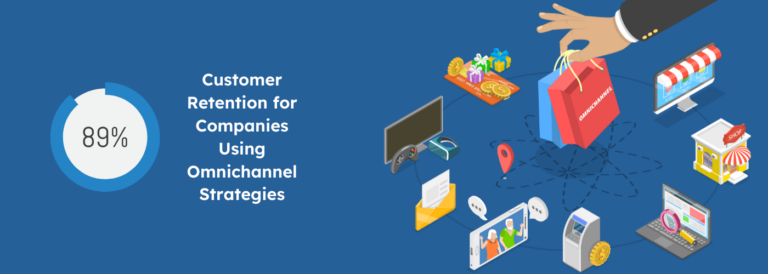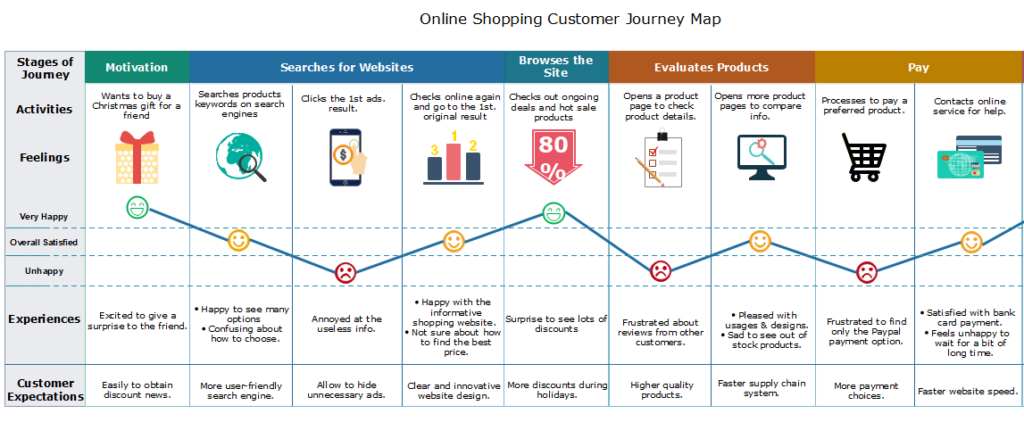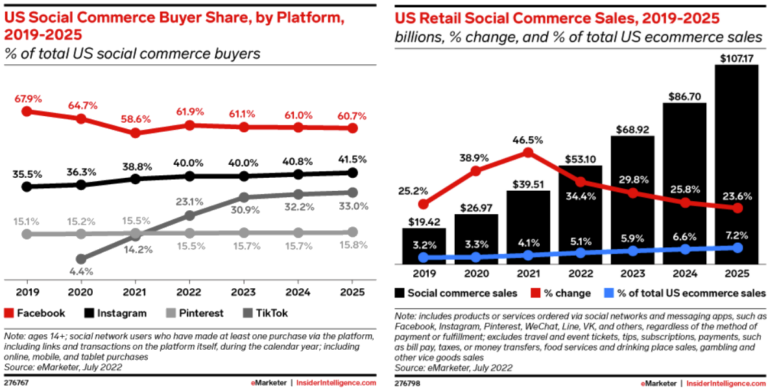As the world becomes increasingly digital, consumers expect a seamless shopping experience across all channels. Omnichannel is a retailing approach that integrates all touchpoints to provide customers with a fully immersive shopping experience. From mobile apps to social media, websites to physical stores, omnichannel allows customers to interact with brands in a way that suits them best.
We will examine the advantages of omnichannel for your organization in this blog. We will also explain how omnichannel techniques provide improved data gathering and contrast omnichannel, multichannel, and single-channel approaches. Finally, we’ll offer advice on creating a successful omnichannel marketing strategy that can boost traffic and revenue while improving the consumer experience.

Understanding Omnichannel
Omnichannel integrates multiple channels to create a seamless customer experience. The focus is on providing a consistent and personalized journey across various touchpoints, such as social media, mobile apps, and physical stores. This strategy allows customers to interact with the brand through their preferred channels, enhancing satisfaction and driving sales. According to the Harvard Business Review, a staggering 73% of consumers use multiple channels to make purchases. Businesses must use an omnichannel strategy that sends the correct message at the right time to appeal to today’s consumers. Unquestionably, having an omnichannel shopping experience will increase brand loyalty, improve customer relationship management, and significantly increase ROI.
How does omnichannel work in practice?
Omnichannel is the ultimate solution that seamlessly blends online and offline channels, empowering customers to browse products on the website, make purchases through a mobile app, and pick up items from physical stores. The primary objective is to deliver a shopping experience that caters to customer preferences and convenience. To achieve this, prioritize the integration of inventory, customer data, and order fulfillment.
What are examples of omnichannel?
Examples of omnichannel include various strategies such as buy online pickup in-store (BOPIS); online ordering with home delivery; buy online, return in-store; and mobile app ordering. Additionally, social media shopping, chatbots for customer service, and personalized marketing campaigns are other examples of how businesses implement omnichannel commerce.
Omnichannel vs. Multichannel vs. Single-Channel
Understanding the differences between omnichannel, multichannel, and single-channel approaches is crucial for businesses. Omnichannel provides a seamless integration of all channels, offering a consistent customer experience across touchpoints. In contrast, multichannel involves utilizing multiple channels, but they may not be integrated. On the other hand, single channel focuses on using just one channel to reach customers. The right approach depends on your business goals and target audience. With omnichannel, you can provide a superior brand experience, leverage digital channels like social media and chat, and even bridge the gap between online and brick-and-mortar stores. It’s about meeting customers’ expectations in today’s digital age, where user experience and real-time interactions are key.
Single channel
The single channel approach focuses on utilizing a specific channel such as online, catalog, mail-order, face-to-face selling, or traditional retail to engage with customers. However, this strategy may have limitations. With limited touchpoints, the customer journey becomes narrow, resulting in missed opportunities for engagement.
Furthermore, the lack of integration across multiple channels prevents businesses from providing a seamless experience. This can limit visibility and reach, as well as hinder efforts to target a specific customer segment. For businesses aiming for a comprehensive and integrated customer experience, the single-channel approach may not be ideal.
Multichannel
Multichannel involves utilizing multiple channels to reach customers, providing them with more touchpoints throughout their journey. This allows for a broader reach and increased visibility for your business. However, it’s important to note that multichannel strategies may lack consistency and personalization across channels, as each channel may operate independently.
To effectively implement a multichannel approach, careful coordination and management of each channel are necessary. Businesses should also be mindful of the contribution each channel delivers to the company’s revenue and profit. To do this, they would need to track marketing spend in each channel and review metrics like customer response, conversion rate, and loyalty to get an accurate picture of return on investment.
Not all multi-channel experiences are omnichannel, but all omnichannel experiences use multiple channels. Amazing mobile marketing, compelling social media campaigns, and a beautiful website are all possible. However, if they don’t share information, they fail to give clients an omnichannel experience.
Omnichannel
Omnichannel combines multiple channels into a seamless and integrated customer experience. It provides a consistent and personalized journey across all touchpoints, leveraging real-time data sharing and communication. This enhances customer engagement and satisfaction. Research shows that omnichannel customers spend more compared to single-channel shoppers. In fact, according to BigCommerce and Feedonomics, “marketing across three or more channels earns 250% higher engagement“.
However, implementing an effective omnichannel strategy requires a strategic and holistic approach. Businesses may provide a consistent brand experience by seamlessly combining digital channels like SMS, chat, and social media with conventional brick-and-mortar storefronts. Omnichannel marketing can result in higher ROI and a more successful customer relationship management (CRM) system using the correct business strategy. In today’s digital landscape, an omnichannel retail experience is key to meeting the expectations of today’s consumers.

Key Benefits of Omnichannel
Omnichannel offers several key benefits for businesses. First and foremost, it enables greater reach by allowing businesses to target a wider audience through various channels, both online and offline. This broader reach translates into increased visibility and customer engagement.
Additionally, omnichannel enhances the customer experience by providing a personalized and consistent journey across multiple touchpoints. For example, 17 years ago, the average consumer typically used two touch-points when buying an item and only 7% regularly used more than four. In 2021, consumers used an average of almost six touch-points with nearly 50% regularly using more than four.
Moreover, omnichannel facilitates better data collection, providing valuable insights for analysis and improvement. By leveraging these key benefits, businesses can optimize their strategies and drive growth.
Greater reach
Expanding its market share and visibility, omnichannel allows businesses to target customers across multiple channels. By engaging with customers at various touchpoints, this broader approach enables a wider reach and the opportunity to tap into new markets, increasing the customer base.
The use of digital channels, such as SMS, chat, and social media, as well as traditional brick-and-mortar stores, ensures that businesses can connect with today’s consumers at the right time and through their preferred platforms. With an effective omnichannel strategy in place, businesses can enhance their brand experience, boost customer relationship management, and achieve a higher ROI.
Enhancing Customer Experience with Omnichannel
Increasing customer experience is a fundamental objective of omnichannel. By delivering a seamless and tailored experience to customers, businesses can guarantee a seamless experience across all channels. Per ZenDesk’s CX Trends Report, 64 percent of customers are more likely to spend more if their issues are resolved on the channel they’re already using.
This underscores the significance of prioritizing omnichannel strategies in your business plan. Omnichannel strategy not only increases client satisfaction but also increases client loyalty and retention. By focusing on customer experience, personalization, and providing a consistent experience, businesses can reap the benefits of an omnichannel retail experience.
Increasing Sales and Traffic through Omnichannel
According to recent data, consumers who are part of an omnichannel strategy shop 1.7 times more frequently and make more purchases than single-channel shoppers. Omnichannel gives customers a variety of methods to interact with a business, thereby increasing revenue and website traffic. Customers can view and buy products online, go to a physical store or even buy products using mobile apps. This broader reach and accessibility lead to higher conversion rates and revenue.
By leveraging omnichannel shopping, businesses can create a seamless and convenient buying experience for customers, boosting sales and traffic to their online store.
How Omnichannel Facilitates Better Data Collection
Omnichannel revolutionizes data collection by enabling businesses to gather valuable customer insights from multiple channels. This encompasses purchase history, preferences, and behavior patterns, forming a goldmine of information for targeted marketing and personalization efforts.
By analyzing this data, businesses can refine their omnichannel strategies, providing an enhanced customer experience. Leveraging machine learning techniques for data analysis and customer journey mapping contributes to the identification of actionable insights that boost the effectiveness of the overall business strategy. Omnichannel empowers businesses to harness the power of data, paving the way for informed decision-making and a competitive advantage in today’s consumer-centric market.
Data Collection
The best tool for businesses to understand the behaviors, preferences, attitudes, and values of their consumers is omnichannel data. Omnichannel data analysis adopts an integrated strategy to offer a comprehensive perspective of consumer interactions, in contrast to multichannel data analysis, which focuses on fragmented data.
With the power of omnichannel data, marketers can not only understand historical and present customer activity but also predict future needs and wants. Product suggestions, upselling, and cross-selling tactics can be improved with the use of this data. Additionally, customer journey bottlenecks may be found, and the entire customer experience enhanced through omnichannel data analysis.
It’s also important to note how the impending loss of cookies is shifting the focus to consent-based information. Building trust with your customers so they volunteer information is one of the best ways to collect data.
Role of Data Analysis in Improving Omnichannel Strategy
Data analysis plays a crucial role in optimizing an omnichannel strategy. Businesses can gain valuable insights into patterns, preferences, and trends by analyzing customer data. This data is essential for improving marketing strategies, personalizing the consumer experience, and improving performance. Businesses can decide which channels to prioritize, what items to provide, and how to reach their customers at the correct moment by using data analysis. Real-time monitoring of customer behavior allows for quick adjustments to strategies.
It’s important to note that Forrester’s research found that 74 percent of firms aspire to be data-driven, but only 29 percent have successfully connected analytics to action. However, with the right approach and tools, any business can become data-driven and achieve success. Tools that work to integrate data from different platforms and let you build specific reports are called customer data platforms.
Importance of Customer Journey Mapping in Omnichannel
Understanding the customer’s path from initial contact to purchase is crucial in omnichannel. Customer journey mapping allows businesses to gain insights into the various touchpoints and interactions that a customer has with their brand. By mapping out this journey, businesses can identify pain points, areas for improvement, and opportunities for engagement. This knowledge helps optimize the omnichannel experience and increases customer satisfaction.
Through customer journey mapping, businesses can better understand how different channels contribute to the overall brand experience. It enables them to deliver personalized experiences at the right time and through the right channels, ensuring a seamless omnichannel retail experience for their customers.

Building an Effective Omnichannel Marketing Campaign
Nothing disrupts the customer journey more than a disconnect between a brand’s website, social media, emails, and in-store experience. However, with effective omnichannel marketing, businesses can guide their customers seamlessly from touchpoint to touchpoint, without any barriers or dead ends. This approach can lead to closed deals and maximum sales. On the other hand, if not executed properly, businesses risk losing customers.
Important elements of omnichannel strategies
To ensure a successful omnichannel strategy, it is important to focus on several key elements. It is crucial to provide a consistent experience over all touchpoints. Customers must have a consistent and fluid experience whether they are using your website, going to your physical location, or connecting with your brand on social media. This means allowing customers to easily transition between different channels without any disruptions.
Personalization is another important element in omnichannel strategies. Businesses can confidently enhance the overall user experience by leveraging customer data to tailor content and offers to individual preferences. Real-time messaging, such as SMS or chat, is an effective way to engage with customers and keep them informed. Prioritizing customer satisfaction and loyalty is crucial. By focusing on building strong relationships and delivering exceptional service, businesses can confidently create a loyal customer base that is more likely to make repeat purchases.
Starting with the Basics: eCommerce and Social Media Channels
A user-friendly website is essential to ensuring a flawless online purchasing experience. To achieve this, an interface must be designed with simple menus, search capabilities, and product classification. Furthermore, considering the growing number of consumers who use their smartphones and tablets for product browsing and purchases, optimizing your website for mobile devices is crucial.
Social media is crucial for building brand recognition and encouraging consumer engagement. Forecasts suggest that the value of social commerce sales will reach around 2.9 trillion U.S. dollars by 2026. By utilizing social media channels, you can reach a larger audience and foster a sense of community around your brand. This includes regularly posting compelling content, responding to customer inquiries and feedback, and leveraging social media advertising to enhance your reach.
Integrating your eCommerce store with social media channels is an effective way to implement an omnichannel approach. This allows customers to seamlessly move between different channels, such as browsing products on your website and then purchasing them through social media platforms or vice-versa. By providing this cohesive experience, you can enhance the customer journey and drive conversions.

Determine the strengths of each channel
Evaluate each channel in omnichannel marketing. Gain insights into how customers interact with your channels. Look for their preferences, their experiences, and their pain points. By doing so, you can create a seamless customer experience across all channels. This improves customer engagement and loyalty through personalized marketing and communication. Utilizing data analytics allows you to track and optimize the performance of your omnichannel strategy.
After carefully analyzing each channel, a business can adapt its omnichannel strategy to meet the demands of its customers. By using the power of all the channels used by your consumers, you can provide the experience they are looking for increase your ROI and build long-lasting customer relationships.
Perform competitive analysis
Performing a thorough competitive analysis is essential to gain valuable insights into how other businesses are leveraging omnichannel strategies and to maintain a competitive edge in the market. By analyzing your competitors’ tactics, you can identify best practices and gain a comprehensive understanding of how to effectively engage and purchase from customers across various channels.
Furthermore, selecting the right technology and platforms is critical to successfully implementing omnichannel strategies. This guarantees seamless integration and synchronization of data, enabling you to deliver a consistent brand experience across all touchpoints. This not only enhances the user experience but also strengthens your overall business strategy, leading to a significant boost in ROI.
What's Next in Omnichannel?
The future of omnichannel is headed towards personalized experiences for customers. By 2030, shopping will be highly customized, with activities even taking place in the metaverse. Artificial intelligence and machine learning will optimize omnichannel strategies, while augmented reality and virtual reality technologies will enhance the shopping experience. Social media platforms will integrate further with eCommerce, creating new business opportunities.
As many retailers attempt to generate their own retail media networks, marketplaces like Walmart are drawing interest not just as channels for purchases but also as venues for advertising. Plus, the convergence of retail media and CTV may lead to a change in spending from performance display advertisements to streaming video commercials.

Conclusion
In conclusion, implementing an omnichannel strategy can benefit your business. By seamlessly integrating the customer experience across multiple channels, you can expand your reach and elevate customer satisfaction to new heights. Sales increase as does customer traffic.
You can easily gather and evaluate data with omnichannel marketing, giving you the ability to make educated choices and improve your entire strategy. Prioritizing crucial elements such as your website and social media platforms, and utilizing the unique advantages of each platform are essential for developing a successful omnichannel strategy. Performing competitive analysis and mapping out the customer journey are also crucial steps to ensure success.
Other Articles You May Be Interested In
